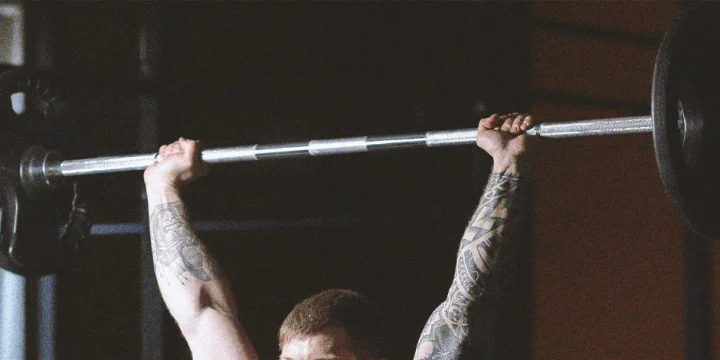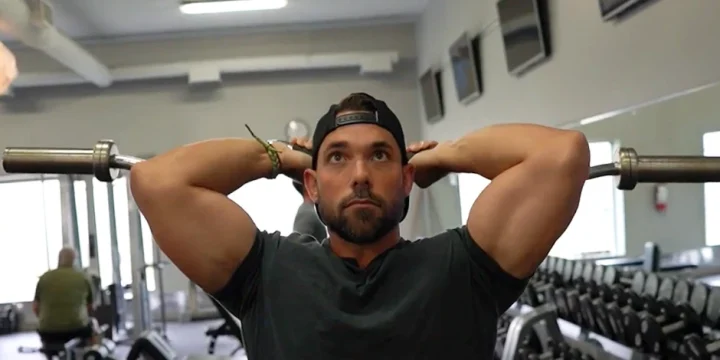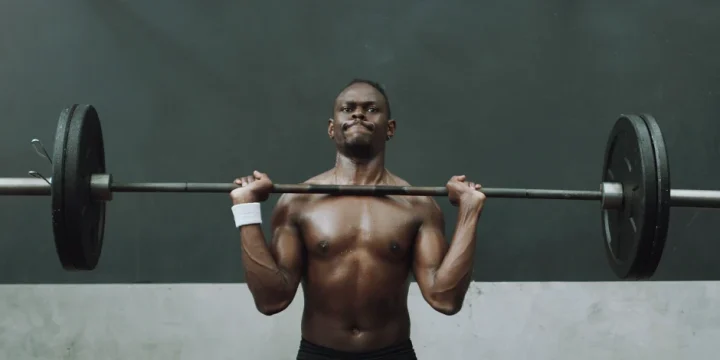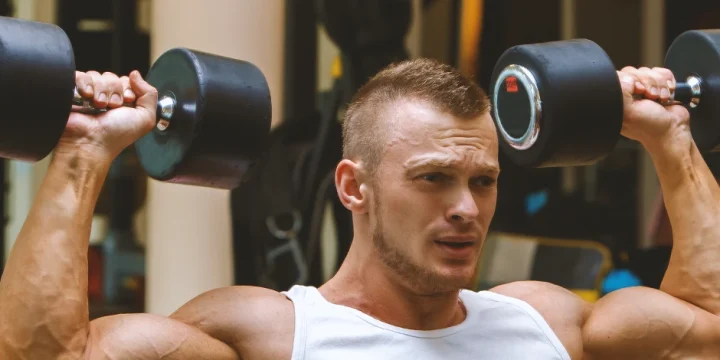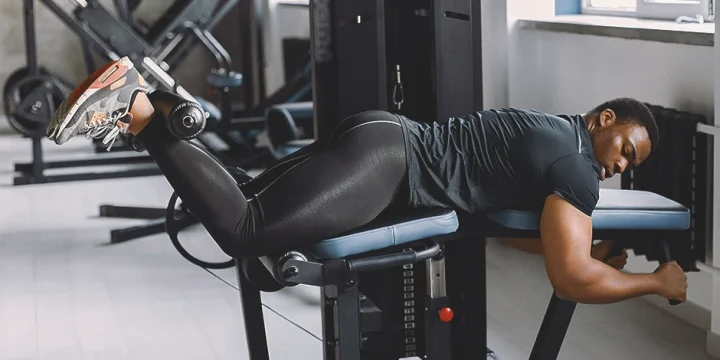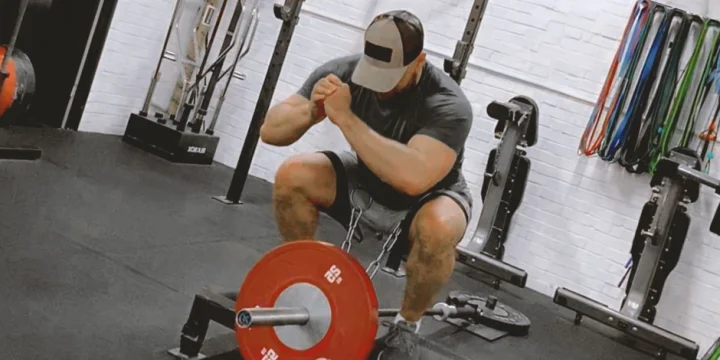As a fitness trainer with years of experience, I’ve had a front-row seat to the age-old debate: leg press vs. squat.
I have helped countless clients achieve their strength and muscle-building goals so I understand the importance of choosing the correct exercises to maximize results and minimize risks.
This article will explore these two popular lower body exercises by comparing their advantages, disadvantages, proper form, and variations.
Let’s get started.
Quick Summary
- To maximize lower-body strength and muscle development, choose between leg presses for targeted muscle work and squats for a full-body workout.
- Leg presses are ideal for beginners or those with balance issues, offering a seated exercise that emphasizes quads with minimal spinal load.
- A study in the Journal of Sports Medicine and Physical Fitness found that squats significantly improve jump performance, with participants experiencing a 12.4% increase in standard jumps and 12% in countermovement jumps.
- In my professional opinion, combining both leg presses and squats in a workout routine provides the most comprehensive approach to lower body strength training.
How Do Leg Presses And Squats Differ From Each Other?

Leg presses and squats primarily differ from each other in how they work similar muscles.
Both the leg press and squats work your quads, hamstrings, and glutes, but squats are more of a whole-body exercise by engaging the upper body.
An interesting 2018 study published in the Journal of Sports Medicine and Physical Fitness studied the body composition and functional outcomes of leg press vs. squat exercises.
Researchers divided participants into three groups: leg press, squat, and leg press and squat, to perform their respective exercises twice a week for ten weeks [1].
Here’s what researchers found:
- The results of the study show that free weights and machines can improve functional outcomes.
- This study highlights the importance of strength training. The leg press group improved balance, while the squat group significantly affected the countermovement jump.
- The study further demonstrates that strength training exercises, whether they rely exclusively on or include machines, can enhance dynamic balance.
In a nutshell, both leg presses and squats benefit building muscle and strength in the lower body.
Leg Presses

Leg presses are a type of exercise that involves being seated on a leg press machine.
Here’s how to do them:
- Sit on a preferred home gym leg press machine.
- Place your back against the padded backrest.
- Rest your feet on the two footrests.
- Begin the exercise with your knees bent.
- Move the weight by straightening your legs and then return them to their bent position.
- Repeat for the desired number of reps.
“Like all strength training exercises, leg presses build muscle, reduce the risk of injury, and counteract age-related muscle loss.”
- Kirsten Nunez, MSc, BSc
Leg Press Pros
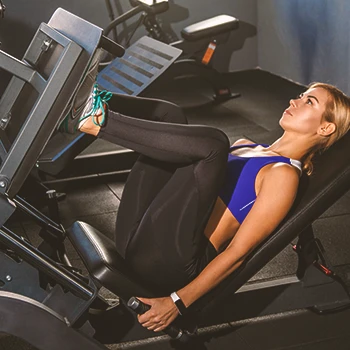
Here are some benefits of leg presses:
- The leg press, compared to the squat, is a great beginner exercise to work the lower body muscles.
- The leg press can effectively strengthen leg muscles without needing a spotter.
- Less range of motion than a squat leads to increased emphasis on the quads rather than the glutes and hamstrings.
- Adjusting the foot position on the footpads allows for emphasizing different muscles.
- It is easy to adjust the weight on a leg press machine.
- There is minimal load on the spine, making it a good exercise for individuals with back problems.
Leg Press Cons
Here are some downsides associated with leg presses:
- Injuries to your knees are possible if you lift too much weight or lock your knees when extending your legs.
- When using a leg press machine, the risk of working one leg harder than the other is present because the machine moves the same whether one or two legs are involved.
- It is possible to round your back if you are attempting to lift too much weight on the machine.
- It is essential to be mindful when loading the machine, as it may be tempting to add too much weight.
Variations

There aren’t many leg press variations as leg press machines limit options, but here are the common ones I use with my clients:
- One-Leg Leg Press: You can do the conventional leg press with a single leg for a more thorough workout. It is important to ensure the weight is manageable when using one leg during leg pressing.
- Higher Foot Placement of Leg Press: Feet placed higher on the footpad increase the extension and contraction of the hamstrings and glute muscles. There is a reduced range of motion at the knee during the leg press.
- Lower Foot Placement: Feet placed lower on the footpad require more effort from the quads and less hamstring and glute activation. This variation increases the range of motion of the knees.
Squats

Squats are a compound exercise that increases lower body and core strength. Unlike leg presses, your feet are on the ground during squats.
Though you can use a machine to perform squats, no equipment is necessary.
Here’s how to do a bodyweight squat:
- Stand with feet shoulder-width apart, with toes pointing slightly outward and arms straight out in front.
- Bend knees to push hips backward while keeping the back straight and the torso upright.
- Move as if sitting back in a chair, reaching a 90-degree angle or lower.
- Push up through your feet to straighten your legs.
“Changing up the basic squat allows you to target different muscle groups. It also helps with motivation so you don’t get bored with performing the same move repeatedly.”
- Sara Lindberg, BS, MEd
Squat Pros
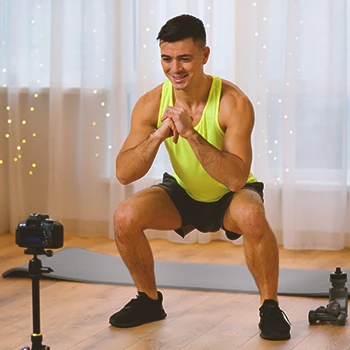
Here are some benefits of squats:
- Squats target a range of muscles from different angles.
- Doing squats can help strengthen the core and back muscles.
- Squats may improve flexibility in the knees.
- It is an excellent exercise to increase leg strength.
- Squatting can help improve posture by focusing on keeping the back straight.
Squat Cons
Here are some disadvantages associated with squats:
- Risk of back injury when leaning too far forward or rounding the back.
- Shoulder strain is possible when supporting heavy barbells.
- Chance of getting stuck at the bottom of a squat and unable to get back up.
- Knee injuries can occur if they move too far in or out during the exercise.
- A spotter may be necessary, depending on the variation.
Variations

Many squat variations are available to help target upper body and leg muscles at different angles.
I consistently advise my clients to first master the standard squat technique, ensuring a solid foundation, before progressing to more advanced variations:
- Goblet Squats: Great for beginners, goblet squats with a chest-level kettlebell teach proper form and prep you for tougher moves like barbell squats.
- Barbell Squats: Load the bar on your upper back, keep straight, and squat. Remember, no leaning forward to avoid back strain.
- Hack Squats: Done with barbells or machines, hack squats are easier on your lower back as the weight aligns with your center of mass.
- Front Squat: Holding a barbell or dumbbells at shoulder height, front squats are knee-friendly and lower back safe.
- Wall Squat: Perfect for newbies or if you've got knee issues, wall squats are all about squatting against a wall until your thighs are parallel to the floor.
- Jump Squats: Squat down, then leap up; these are your go-to for an explosive leg workout.
- Pistol Squat: A one-leg challenge, pistol squats boost individual leg strength, core intensity, flexibility, and balance.
Which Exercise Should You Choose?
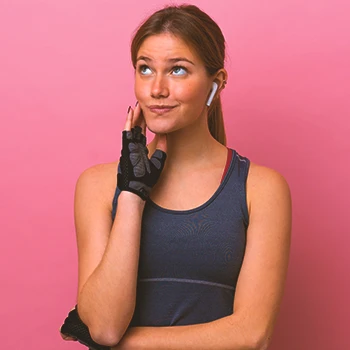
Pick one based on your fitness goals and abilities.
Leg presses, ideal for those with balance issues, are done seated and, as per the Frontiers in Sports and Active Living journal, allow deeper knee flexion and more force [2].
Squats, in contrast, engage your entire body, especially the core, enhancing overall strength and notably boosting jump performance, with a 12.4% increase in standard jumps and 12% in countermovement jumps, as detailed in the Journal of Strength and Conditioning Research [3].
Why not mix it up?
Using both leg presses and squats in your routine targets similar muscles in varied ways, maximizing benefits. It's the principle I often use with my clients.
I also recommend incorporating one of the high-quality protein powders we extensively tested into your fitness routine.
FAQs
Does Leg Press Build As Much Muscle As Squat?
A leg press won’t build as much muscle as a squat. You should perform the two exercises during your leg workouts, but squats are a better overall muscle builder, while leg presses emphasize the quads.
Can Leg Press Replace Squats?
A leg press can’t effectively replace squats because it is an isolation exercise that works the leg muscles, primarily the quads. Squats are a compound exercise giving a more whole-body workout.
References:
- https://pubmed.ncbi.nlm.nih.gov/27735888/
- https://www.ncbi.nlm.nih.gov/pmc/articles/PMC8374053/
- https://pubmed.ncbi.nlm.nih.gov/26439782/
About The Author
You May Also Like
